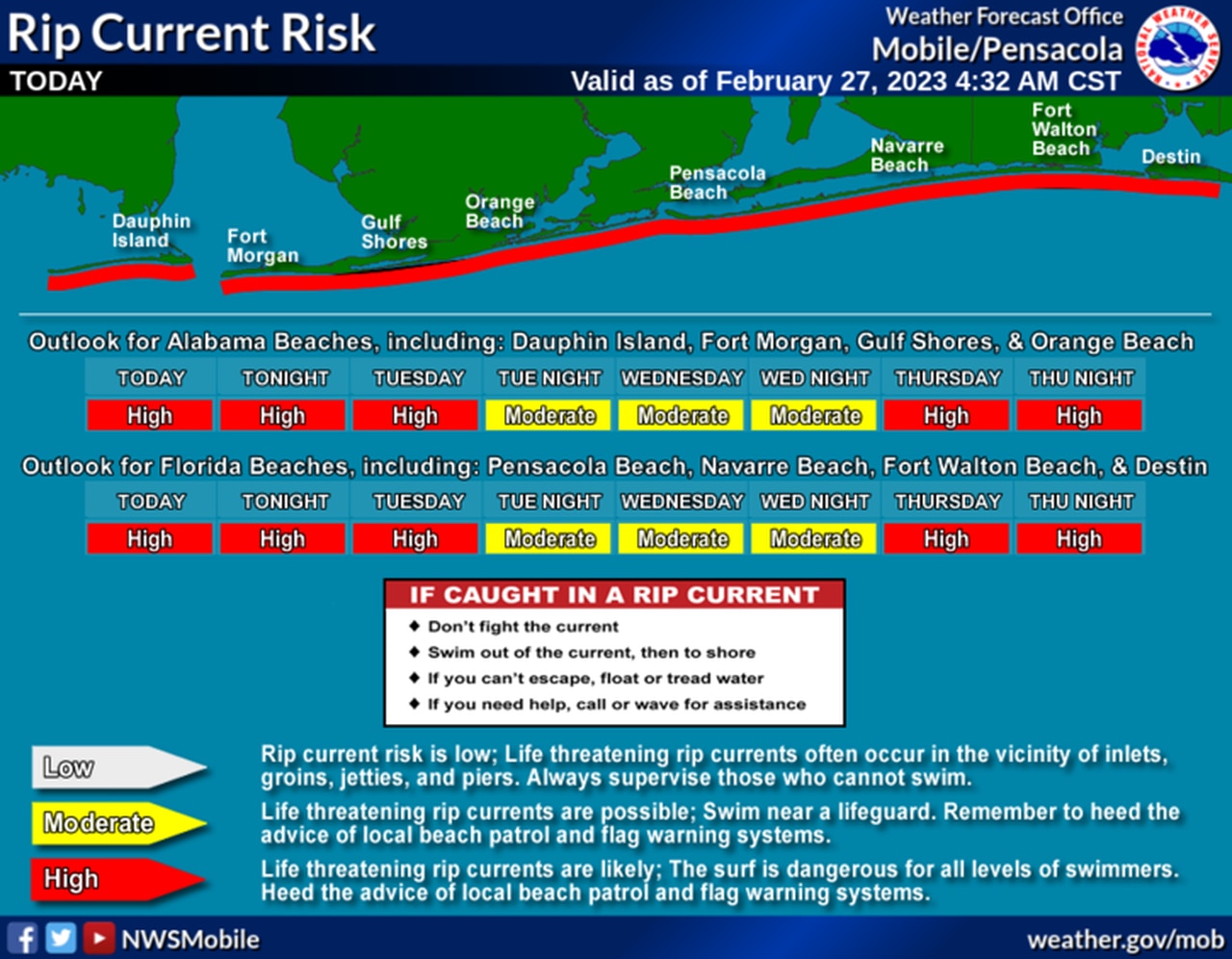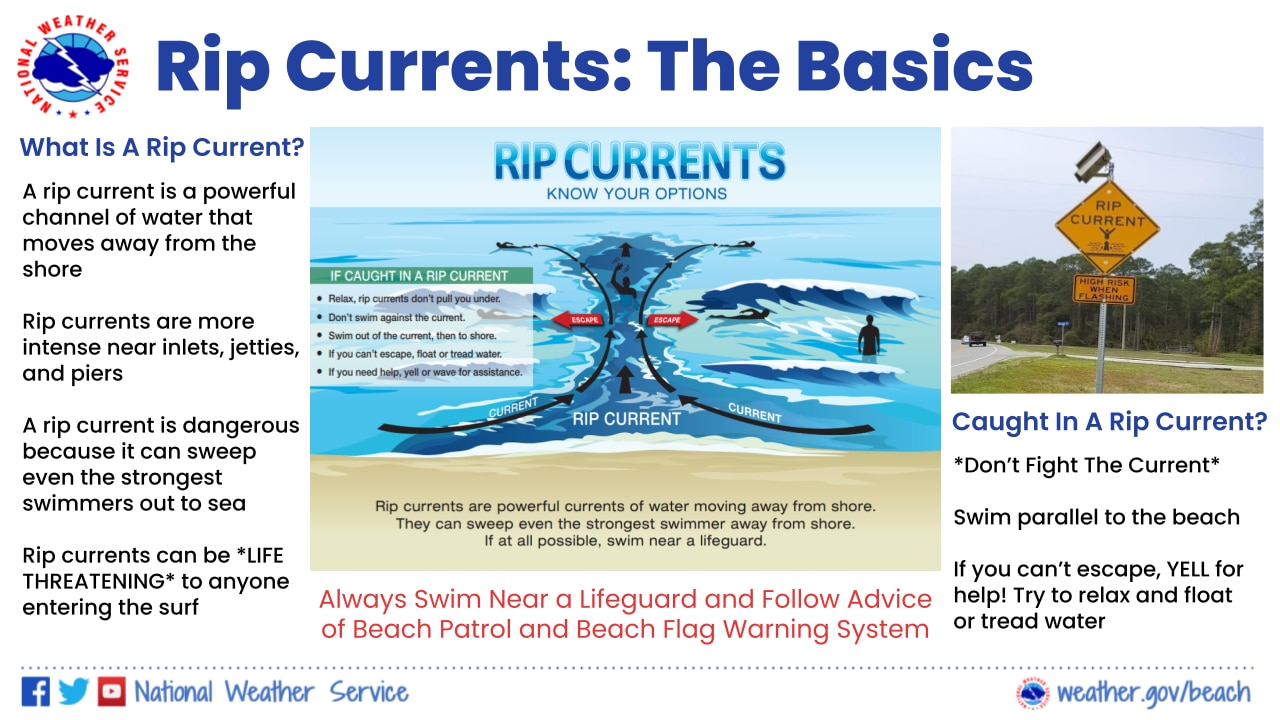Gulf’s deadliest weather isn’t what you may think
It’s not Jaws that is the mostly likely to get you at the beach. Or a hurricane. Or even a tornado.
It’s a rip current. They are often lurking offshore — and they can often be deadly.
The National Weather Service in Mobile said that since 2002 rip currents have accounted for the most weather-related deaths for coastal Alabama and the Florida Panhandle — more than hurricanes and tornadoes combined.
The weather service said there have been 191 rip current deaths since 2002 along the beaches covered by the National Weather Service Offices in Mobile and Tallahassee, Fla. That area stretches from Alabama to Florida’s Big Bend and includes the big beach hangouts of Gulf Shores, Orange Beach, Destin and Panama City.
With that in mind — and knowing that areas around Alabama as well as the rest of the nation are about to kick off their spring breaks — the weather service offices in Mobile and Tallahassee are hosting Rip Current Awareness Week and trying to spread the world to those well inland.
All week the weather service will share tips on spotting, avoiding and surviving rip currents.
A rip current is a narrow, fast-moving channel of water that is common along beaches. That channel of water acts like a treadmill, pulling unsuspecting swimmers away from shore despite their best efforts to fight it.
Rip currents are narrow channels of fast-moving water.
According to the weather service rip currents can move as fast as 8 feet per second, which is a faster pace than an Olympic swimmer.
Rip currents can form along shorelines, but the weather service said they also commonly form around breaks in sandbars and near inlets, jetties and piers — where they can be even stronger.
Rip currents don’t pull you under the water, but they will pull you away from the beach. They can be more powerful than even the strongest swimmer. And they can be panic-inducing if you’re caught in one.
That’s why the most important thing to do if you’re caught in a rip current is maybe the hardest — stay calm.
The natural impulse may be to fight the current and try to swim back to the shore. But that likely won’t work. Instead it will tire you out and and get you nowhere.
Instead, swim parallel to the beach until you feel the current ease.
If you can’t get out of the rip current then yell for help and try to tread water or float on your back until help arrives.
How do you avoid rip currents?
The weather service issues forecasts for the potential for rip currents along the Alabama and northwest Florida beaches.
They can be found here for Alabama and northwest Florida and here for the eastern Florida Panhandle.
The forecast for this week includes a high risk for rip currents for the majority of the next few days:

There will be a high risk of rip currents this week along the Alabama and northwest Florida beaches.
To learn more about rip currents follow the NWS Mobile or NWS Tallahassee on Twitter or visit their websites here and here.
